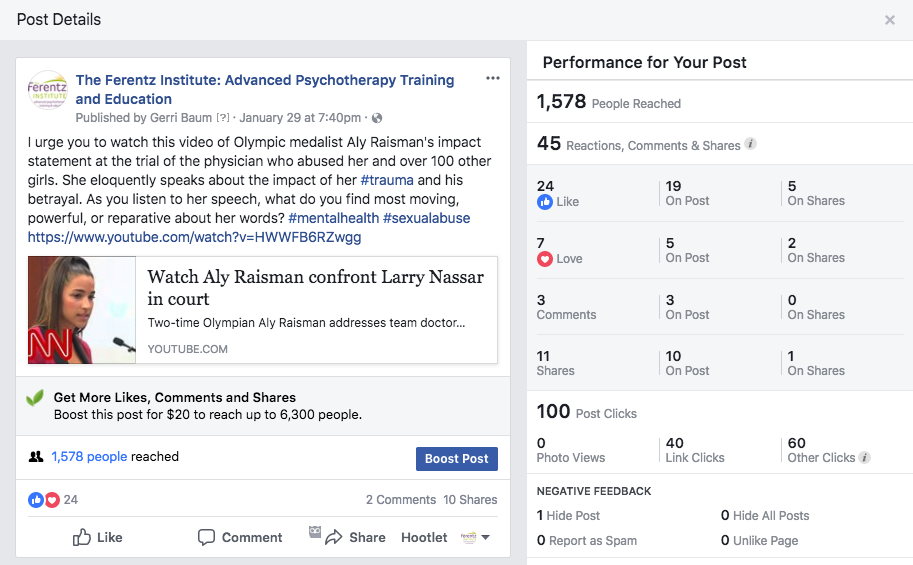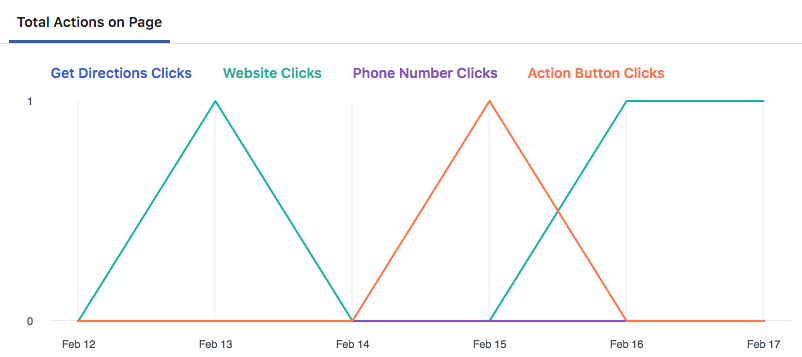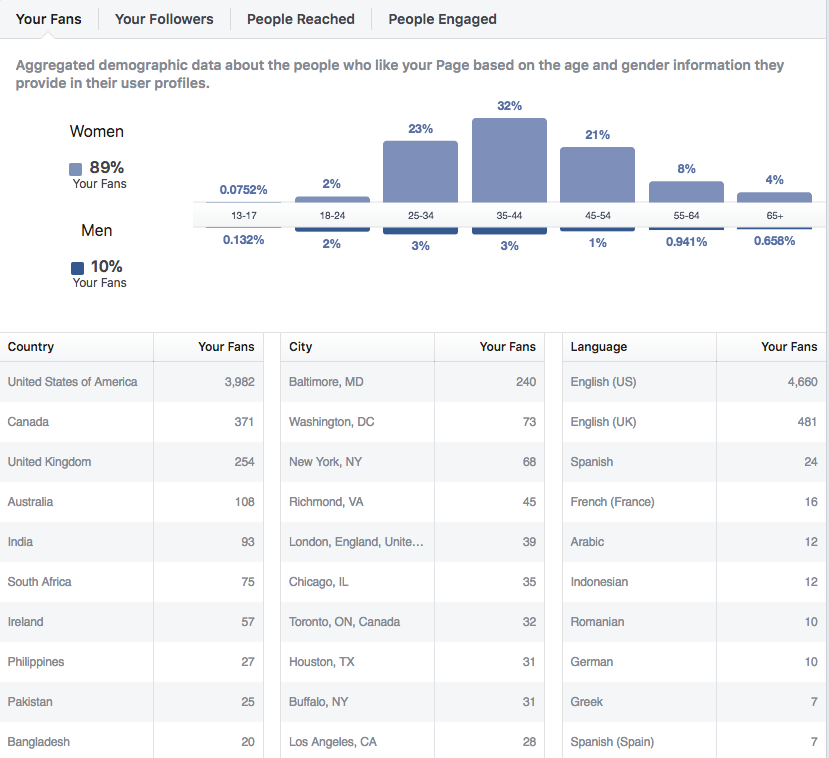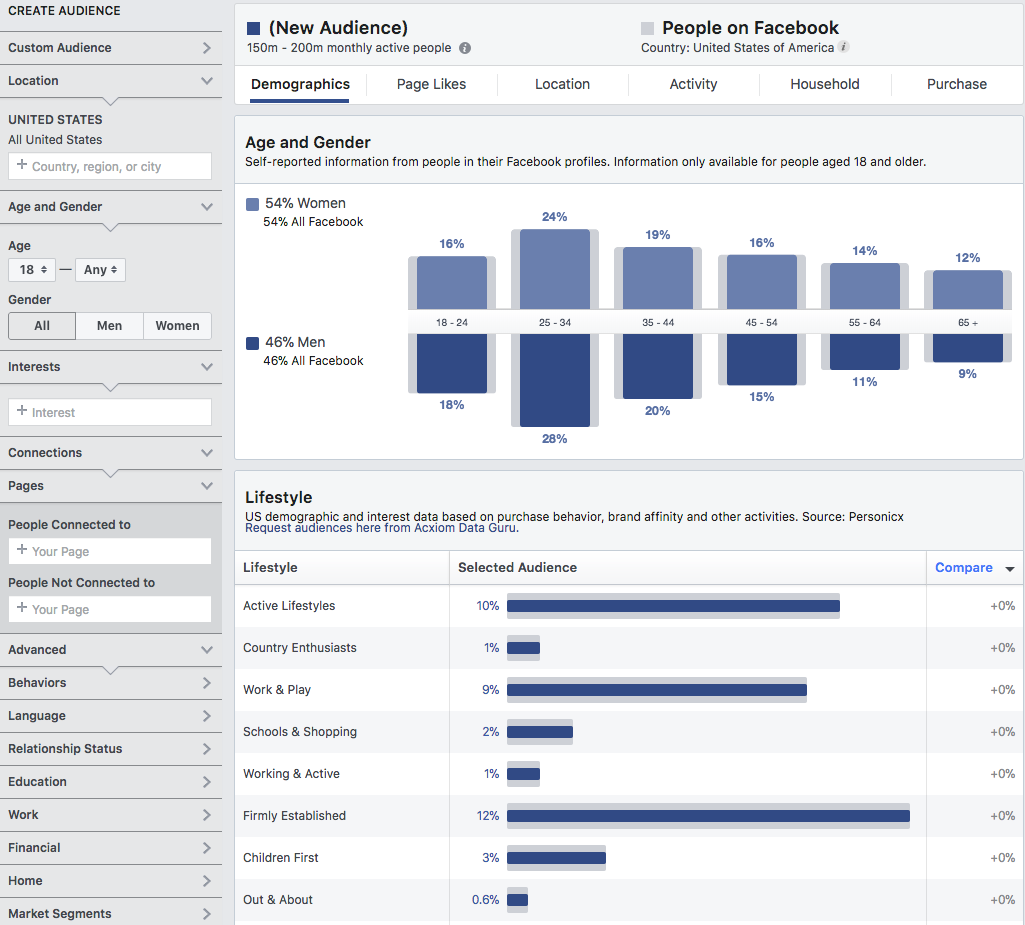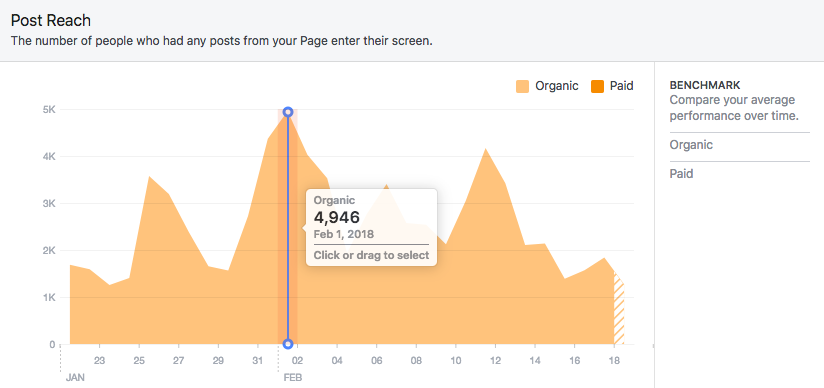It’s important to measure and evaluate your school’s Facebook page metrics to learn how it’s performing on the platform. By analyzing the raw data from your organic and paid campaigns, you can determine which tactics work best for your school and those you can do without.
In this article, you’ll discover the top Key Performance Indicators (KPI’s) that you should be measuring and monitoring to assure that your school’s Facebook strategy is aligned for success.
#1 Optimal Times to Post
According to a study by Wiselytics, it takes just 30 minutes for a post to get 50% of its global reach. And with Facebook’s recent edict, LINK TO YOUR RECENT POST you’ll be lucky if your school page’s content is seen by 3% of your audience. By knowing when your audience is online and most active, you can determine when you should publish your content and engage with them.
On Facebook’s Insights page, click Posts in the left navigation. Select When Your Fans Are Online at the top. You can then hover over each day of the week to see a bell curve that shows how engagement changes by the hour.
#2 Track Engagement
This past January, Facebook told us flat out that if you want to be seen in your audience’s newsfeed, you better insight meaningful and authentic conversation. This means that you need to share relevant content that influences your viewers to engage, comment on and share your ideas. Anything much less will not be seen in users’ newsfeeds unless it is supported by paid advertising.
Gauging how your audience reacts to your content is critical to your social media strategy. The results should be the impetus that helps drive the type of content you offer on your social platforms.
Facebook’s in-depth metrics will let you know how your followers feel about your content. You can find this information under the Insights page when you click Posts in the left dashboard.
This feature allows you to discover the difference between your paid and organic content. The dropdown arrow next to Organic/Paid will allow you to compare results from fans vs. non-fans. If you click on the dropdown arrow next to Reactions, Comments & Shares, you’ll also discover who is hiding your content, reporting spam and other information that impacts your metrics
Click on the individual posts, and you get even more in-depth knowledge of the engagement, allowing you to see details of the post’s performance and how your audience reacted.
Want to know which type of content is working best for you? Click on Post Types to learn whether it’s more beneficial to post video, posts with links or posts with photos.
#3 Link Clicks
Click rates reflect the quality of your content – most important, the title and image that sway viewers to click on the post. Clicks may also impact conversions. Though not specifically for generating revenue, clicks help you learn how your followers engage with you, why they engage, and what “makes them click” on various links. Use this information to help you craft content that will be more relevant to your audience.
Facebook Posts, on Insights, offer post clicks metrics for individual posts to tell you what readers found most interesting. Actions on Page, found on the left navigation bar under Insights, help you to understand how well various elements perform, such as those that drive action to your website: phone calls, directions, call-to-action, etc. The information provided also includes user demographics.
#4 Audience Demographics
Monitoring your audience demographics can help you to inform your strategy, craft posts and determine how you should target your campaigns.
Facebook offers two ways to access audience information. Under Insights, click on People to view Your Fans, Followers, People Reached and People Engaged.
Audience Insights offers an even more in-depth look into audience demographics and psychographics, so that you can create more relevant ads for them. The information you discover can also help you to craft posts that will better resonate with your audience and increase engagement. You can learn everything from behaviors, education and parent information to financial status and purchasing habits of everyone connected to your Facebook Page, everyone on Facebook or even a Custom Audience. A Custom Audience may be your database, people who’ve viewed your website, your newsletter mail list and more.
You can easily access Audience Insights if you are Page admin with advertiser level permissions or higher for your school. If you use an agency to manage your ad campaigns, the agency can access and share Audience Insights, so you can learn more about the people you want to target.
#5 Measuring Reach
When people engage with your content, their activity is usually seen in the newsfeeds of their followers, which can increase your page’s reach. The value of this metric is to inform you of how far your message travels and how many eye balls it gets in front of. As important as this info is, keep in mind that reach is just an estimate, unlike engagement, which offers definitive information such as number of likes, comments, etc.
Track reach on Facebook Insights by clicking on Reach in the left navigation bar. You will learn the number of people who saw any activity from your page as a result of interactions from posts and paid content. Click on a specific day to view posts that contributed to that day’s count of post reach.
#6 Share of Voice
Tracking share of voice will help you to learn what is being said about your school and whether the conversations are positive, negative or neutral. Social Mention, a free social media monitoring tool, will help you measure and compare your school’s mentions to your competition. It will also inform you of information such as top keywords, top users and top hashtags – all valuable facts to help you craft content and campaigns on Facebook and other social platforms.
Paid tools such as Mention, Brand24, Awario, and Radian6 are tools that offer more robust, customizable capabilities to keep closer tabs on the competition, find influencers in your industry, and more. Most of these paid tools offer free trials before you have to dive in and make the purchase.
Wrapping it Up
Though it’s important to keep an eye on your school’s Facebook performance, it’s even more important to monitor and analyze your audience metrics. The information you learn will help you to craft better targeted, customized content that is favorably received and engaged with by your audience.
Need help crafting a strategic social media strategy, contact Kalix.
Gerri Baum is Digital Lead for Kalix Marketing.



